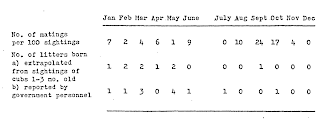It is found in all Atlantic European waters as well as northern Mediterranean waters.
Normally this crab lives in coastal waters under 100 m deep, sometimes over 100 km off coast. But once a year, during the moulting (shell shedding) season, which is followed by the mating season, these crabs move to the shallows. The mating season of the brown crab is mainly in July-September.
Mating of the Brown crabs occurs shortly after the female has moulted, when the female carapace is soft. Mating predominantly takes place at night-time. During that time, male crabs are found attending both hard and moulted females at low-water mark, hiding under rocks...
This is Spider Crab (Maja squinado - Mediterranean sub species and Maja Brachydactyla - Atlantic sub species)
It is found all along the the Atlantic and North Mediterranean coast. Distribution area of Maja brachydactyla (blue circles) and Maja squinado (red squares) along the distribution area of the species
Spider crabs inhabit coarse sand mixed grounds and open bedrock from the shallow sublittoral zone to a depth of 120 m, although highest densities occur between 0 and 70 m. Large migrations of spider crabs occur during the early spring when they move into shallower water to spawn. Female crabs become berried (egg-bearing) from April onwards, and by June all mature females are berried. Hatching occurs from July until November, following which the crabs migrate back to deeper water.
In latitudes located farther to the north, matings were observed in shallow waters from May to July, on the Irish coast, and starting in June on the French coast...
So if you were a primitive hunter gatherer living in Europe, the only time you could catch these crabs was when they were in shallow inter tidal waters. Which happened during their mating season...Which peaks during June-July period...
Which is really interesting considering that this period of the Solar year is on the Zodiac circle marked with the sign of Cancer (Crab)...
Coincidence?
I don't think so.
By the way, “Cancer” is an ancient word of Indo-European origin from a root meaning “to scratch.” Today Cancer is the scientific Latin genus name for “crab,” but in classical usage it described many species of shellfish. In both Sanskrit and Greek the word for crab had the same meaning as crayfish, both animals having pincers. While the Latin word for Cancer, Carcinus, comes from the Greek karkinos, the English word “crab” has Germanic and Old English roots, and an Anglo-Saxon chronicle from about the year 1000 identified Cancer as crabba. In Old High German (800-1050), kerbiz meant simply “edible crustacean” and was also used to describe crayfish. The OED links the Middle High German (1050-1350) krebz to the Middle French (ca. 1400-1600) escrevisse, which in turn became écrevisse (crayfish).
Which is why Cancer is often depicted as crayfish.
More about this in "The index of medieval art" on Princeton website.
So far I have found that:
And now
Cancer - marks mating and best shallow coastal water catching season of European large crabs...
And that I am not inventing things, here is a depiction of two men fishing for crab (of Zodiac Sign: Cancer) on Calendar page for June in the Queen Mary Psalter. British Library, Royal 2.B.VII, fol. 77r. (London, 1310-1320).
And a calendar page for June from the Bedford Hours with the sign of the zodiac – a crayfish. Source: Bedford Hours, France (Paris), c. 1410-1430, Add MS 18850, f. 6r
This means: June is the time cut grass and to catch crayfish
Catching crayfish in the Fishing book by Maximilian I near Lienzer Klause. From: Tiroler Fishereibuch (The Austrian National Library, Cod. 7962 fol 100
Today it is mid July which is the start of crayfish season in all European countries were crayfish hunting is still allowed...
You can read more about medieval crayfish fishing on this "Medieval histories" page.
I will here repeat this question:
Does anyone realize how important this is, from the point of view of the determining the origin of the Zodiac? The official line is that:
"The division of the ecliptic into the zodiacal signs originates in Babylonian ("Chaldean") astronomy during the first half of the 1st millennium BC. "
Yet here we have all these zodiac signs marking extremely important cyclical natural events which occur in Europe...
These zodiac signs could only have been invented in Europe where they have self explanatory meaning. The meaning which was completely lost when zodiac was brought out of Europe to the places where natural cycle is very much or completely different.
Which is why people have forgotten the true meaning of Zodiac: It is a solar not stellar circle...
So was zodiac invented in Europe? And more importantly when was it invented? And what about the other zodiac signs?
Sources for crab lifecycle info:
Brown crab
Spider crab
Marine conservation society website


















































